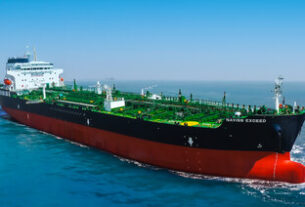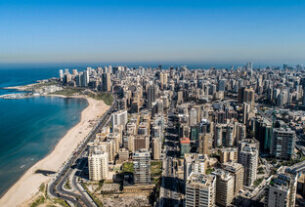Saudi banks delivered a strong fourth quarter for 2024, with net income reaching SR21.5 billion, marking a rise from SR20 billion in the preceding three months. Fitch Ratings highlighted that the improvement was primarily driven by interest rate cuts that expanded net margins, complemented by robust lending growth expected to outpace Gulf peers in 2025. This performance aligns with S&P Global’s January outlook, which projects that Saudi banks will sustain stable profitability in 2025 as higher lending volumes compensate for narrower margins while banks continue to tap international capital markets to support growth tied to the Vision 2030 program. Fitch noted that the average net interest margin for Saudi banks rose to 3.2 percent in the fourth quarter of 2024, up from 3.1 percent in the first nine months of the year. The uptick followed a 12-basis-point reduction in banks’ cost of funding to 3.2 percent after the central bank’s decision to lower rates by 50 basis points, while the yield on average earning assets remained steady at 6.3 percent. Banks with more retail financing exposure stood to gain the most, Fitch observed, underscoring the cushion provided by diversified funding and consumer loan portfolios.
This article provides a comprehensive, in-depth look at the Q4 2024 results, the drivers behind the quarterly and annual performance, the broader lending and funding dynamics, liquidity management, asset quality, capital adequacy, and the outlook for 2025. The analysis draws on Fitch’s assessment while detailing the implications for major institutions such as Al-Rajhi Bank, Bank Aljazira, and Saudi National Bank (SNB), and situates these findings within the broader macroeconomic and policy environment shaping Saudi banking in the Vision 2030 era. The discussion also delves into deposit dynamics, external funding considerations, and the balance between growth financing and risk controls as banks navigate evolving liquidity conditions and regulatory requirements. The goal is to offer a nuanced, economically grounded picture of profitability, resilience, and strategic direction for Saudi banks as they enter 2025, with attention to how the sector might outperform regional peers while maintaining strong asset quality and capital positions.
Q4 2024 Profitability and Net Interest Margin Dynamics
In the fourth quarter of 2024, Saudi banks posted a notable improvement in profitability, with net income expanding to SR21.5 billion from SR20 billion in the prior quarter. This quarterly uplift was driven principally by the channeling effect of interest rate cuts that broadened net margins, reinforcing the earnings power of banks amid ongoing lending activity. Fitch highlighted that the margin expansion was the core engine of the quarterly earnings uplift, but it was not the sole contributor; the solid expansion in lending volumes also played a crucial role in sustaining earnings momentum through the quarter. The sequential improvement in profitability aligns with the bank sector’s broader trajectory, where higher volumes and improved funding conditions offset some margin compression expected from a competitive pricing environment. The rating agency’s assessment underscores a transitional period in which rate cuts provided a near-term tailwind for net interest income, even as banks continued to navigate a landscape of rising credit demand and ongoing capital market activity.
A key quantitative takeaway from Fitch’s analysis is the estimated rise in the average net interest margin (NIM) for Saudi banks to 3.2 percent in the fourth quarter of 2024, up from 3.1 percent in the first nine months of the year. This marginal but meaningful uplift indicates that banks were able to translate improved funding conditions into higher margin capture. The central bank’s policy action—lowering rates by 50 basis points—contributed to a 12-basis-point reduction in banks’ cost of funding, lowering it to 3.2 percent. Meanwhile, the yield on average earning assets remained steady at 6.3 percent, providing a stable environment for net interest income to grow. Fitch noted that banks with heavier retail financing exposure benefited disproportionately from these dynamics, as retail assets typically offer higher margins and more stable funding profiles compared to wholesale channels. In concrete terms, Al-Rajhi Bank and Bank Aljazira, two of the sector’s prominent lenders, experienced quarter-on-quarter increases in NIM of 20 basis points to 3.4 percent and 2.3 percent, respectively, signaling a favorable dispersion of benefits from the rate move and the growth in consumer and SME loans. Saudi National Bank (SNB) also saw its NIM improve, rising to 3.0 percent in Q4 from 2.7 percent in the prior quarter. Taken together, these movements illustrate the extent to which the sector leveraged the rate environment to bolster profitability while continuing to expand lending.
The Q4 performance did not occur in isolation; it was part of a broader pattern across 2024 that culminated in a robust annual profit figure and a constructive outlook for 2025. The quarterly NIM improvement, in particular, reflects a combination of favorable funding costs and sustained asset yields. Banks benefited from the central bank’s rate trajectory, which, combined with prudent liquidity management, supported sustainable net interest income growth. For investors and observers, the Q4 results reinforced the notion that Saudi banks possess a resilient balance sheet structure that can withstand shifts in the macro environment and continue to deliver earnings momentum as lending volumes rise. The next sections delve deeper into the full-year performance, with a close look at 2024 profitability, cost of risk, and the expectations for 2025 as banks seek to capitalize on ongoing liquidity improvements and a still supportive lendings climate.
Key takeaways from Q4 2024 profitability
- Net income for Q4 2024 reached SR21.5 billion, up from SR20 billion in the previous quarter, signaling solid quarterly momentum.
- The primary driver was the combination of improved net margins from rate cuts and stronger lending growth, with margin expansion playing a pivotal role.
- The average NIM rose to 3.2 percent in Q4 2024 from 3.1 percent in the first nine months, aided by a 12-basis-point cut in the cost of funding to 3.2 percent after the central bank’s 50-basis-point rate reduction.
- The yield on average earning assets remained steady at 6.3 percent, implying that the margin expansion translated into real earnings gains without a commensurate drop in asset yields.
- Banks with heavier retail exposure—such as Al-Rajhi Bank and Bank Aljazira—demonstrated stronger NIM gains, while SNB also reported a notable uplift, underscoring the breadth of the margin expansion across the sector.
Full-Year 2024 Performance and Outlook for 2025
Looking at the full-year results for 2024, Saudi banks reported a combined net profit of SR80 billion, up from SR70 billion recorded in 2023. This performance came with an uptick in the sector’s average return on equity, which rose to 15 percent from 14 percent in the prior year. The earnings growth was underpinned by robust lending activity and a lower cost of risk, the latter declining to 30 basis points from 40 basis points a year earlier. The improvement in cost of risk indicates a healthier operating environment and improved credit underwriting, contributing to a more favorable risk-adjusted profitability profile for the sector.
Lending activity remained a central driver of the profitability surge, with overall financing expanding in 2024 and a particularly strong fourth quarter. The annual pace of gross financing rose by 14 percent, up from 11 percent in 2023, signaling that banks were able to sustain higher lending volumes even as competition remained intense. Among banks, Al-Rajhi Bank led the annual lending growth with a substantial increase of SR44 billion in Q4 alone, with the gains evenly distributed between retail and corporate segments. The broader annual data shows that several institutions—Saudi Awwal Bank, the Saudi Investment Bank, and Bank Aljazira—recorded above-average growth, highlighting a diversified pattern of expansion across the sector.
Fitch’s outlook for the Kingdom’s financial institutions is positive regarding 2025, with an expectation that banks will continue to outpace Gulf peers in terms of growth and profitability. The agency forecasted sector financing to rise by about 12 percent in 2025, aided by ongoing rate cuts and improved liquidity conditions. This projection aligns with the broader macroeconomic narrative in which Vision 2030-driven growth, foreign capital access, and an improving funding environment contribute to a favorable profitability trajectory. The central bank’s policy stance, market interest rate dynamics, and the sustained demand for credit from both retail and corporate clients are expected to support continued earnings expansion, albeit with ongoing monitoring of risk factors such as asset quality and liquidity management.
Strategic implications for 2025
- A stable profitability backdrop is anticipated for 2025, supported by higher lending volumes that offset narrower margins.
- Banks are expected to maintain access to international capital markets to fund growth strategies tied to Vision 2030.
- The sector’s profitability hinges on balancing loan growth with prudent risk management and cost control in a changing rate environment.
- The combination of strong capital bases and improving liquidity will be essential in sustaining confidence among investors and counterparties.
Lending Activity and Sector Financing Growth
Lending activity in Saudi Arabia remained robust through 2024, with the fourth quarter contributing a significant share to annual financing growth. In Q4, banks expanded lending by SR87 billion, with Al-Rajhi Bank contributing a substantial SR44 billion increase, reflecting a balanced growth pattern across both its retail and corporate segments. This quarterly and annual lending momentum indicates that credit demand remained resilient across consumer finance, mortgages, SMEs, and larger corporate lending, supporting overall profitability through interest income and related fee streams. The year-end data show that annual gross financing growth reached 14 percent, marking a notable acceleration from the 11 percent growth observed in 2023. This stronger financing trajectory signifies that Saudi banks were well-positioned to exploit favorable macro conditions, a broader capital markets backdrop, and the ongoing push toward diversification of the Saudi economy under Vision 2030.
Fitch’s assessment emphasizes that the Kingdom’s banks are likely to outpace Gulf peers in 2025, with sector financing projected to grow at around 12 percent. This expectation is underpinned by continued rate cuts and improved liquidity, which collectively support higher lending volumes and greater access to funding that can sustain growth without compromising asset quality. The lending expansion has broader implications for the economy, including employment, consumer spending, investment in capital projects, and the strategic repositioning of banks to serve a more dynamic and diversified economy. The growth in lending also interacts with deposit dynamics, funding costs, and liquidity management strategies, creating a framework in which banks must optimize asset-liability management to sustain profitability and risk controls.
Notes on lending composition and growth drivers
- Retail lending growth appears to be a significant contributor to overall lending expansion, supported by improved consumer confidence and financial inclusion initiatives.
- Corporate lending growth reflects ongoing activity in business investments, project finance, and working capital needs within a more supportive macro environment.
- Financing growth is complemented by sector lending diversification, reducing concentration risk across single borrower groups and supporting resilience in earnings.
Deposits, Liquidity Management, and Deposit Trends
One notable development in 2024 was the shift in customer deposits in the final quarter, with total deposits declining by SR35 billion—the first quarterly decline since 2019. Fitch attributed this to seasonal factors but expressed an expectation that deposits would rebound in the first three months of the new year, consistent with prior patterns. The January data supports this view, showing that deposits increased by SR40 billion, according to figures from the Saudi Central Bank. The deposit dynamics carried particular significance for SNB, which experienced the largest outflow in Q4, with its balance declining by SR54 billion, including a SR30 billion reduction in current and savings deposits. These figures represent a meaningful shift in the funding mix for the kingdom’s largest lender, necessitating the deployment of liquidity and funding tools to maintain stability.
To offset deposit declines, SNB leaned on repo facilities and money market deposits, resulting in a higher loans-to-deposits ratio. Fitch calculated this ratio at 115 percent by year-end, compared with a sector average of 105 percent. Despite this higher reliance on external funding and a shifted funding mix, the bank’s regulatory loans-to-deposits ratio remained at 84 percent, underscoring a conservative stance toward capital adequacy and risk management. The broader sector’s deposit dynamics reflect a combination of seasonal behavior, strategic liquidity management, and a continued emphasis on ensuring sufficient liquidity buffers to navigate any unexpected funding pressures. The deposit recovery observed in January also emphasizes the cyclicality of deposits in the Saudi banking system and underscores the need for banks to develop robust liquidity management practices that can accommodate such seasonal fluctuations while maintaining steady credit delivery.
Implications for liquidity and funding strategies
- The withdrawal in Q4 and the subsequent rebound in January illustrate the importance of diversified funding sources, including wholesale funding and liquidity facilities, to manage short-term fluctuations in deposits.
- Banks must balance deposit volatility with prudent liquidity risk management to maintain credit growth and support earnings stability.
- The reliance on external funding by SNB suggests that even large banks want to maintain flexible access to liquidity channels to sustain financing activity during periods of deposit volatility.
- The sector’s liquidity management framework remains a key area of focus for Fitch and other rating agencies, given the potential sensitivity of profitability to funding costs and liquidity conditions.
External Liabilities, Asset Quality, and Impairment
Saudi banks’ external liabilities remained steady around SR0.4 trillion at the end of the fourth quarter, representing roughly 11 percent of total sector funding. Fitch noted that the banks are expected to gradually increase their reliance on external funding, particularly if corporate borrowers continue to seek foreign-currency financing. However, net foreign assets were projected to stay below 2 percent in 2025, indicating a controlled and measured exposure to external sources even as demand for international funding persists. This outlook is consistent with a prudent strategy of expanding access to global capital markets while maintaining a balance with domestic funding to optimize the sector’s overall funding mix.
From an asset quality perspective, the sector’s impaired financing balance declined by SR2 billion in Q4 2024, contributing to a reduction in the impaired financing ratio to 1.4 percent from 1.7 percent at the end of 2023. This improvement reflects better loan underwriting practices, effective collection efforts, and favorable macroeconomic conditions that have supported the performance of loan portfolios. Provision coverage of impaired financing remained robust at 114 percent by year-end, signaling a strong cushion to absorb potential losses. Fitch projected that Saudi banks’ asset quality metrics would stay robust in 2025, aided by the combination of prudent risk management, ongoing lending activity, and the supportive operating environment. The balance between new lending growth and the maintenance of high-quality assets is a central feature of the sector’s risk management framework and a key factor in sustaining confidence among investors and regulators.
Asset quality indicators and risk controls
- Impaired financing balance: down by SR2 billion in Q4 2024; impaired financing ratio: 1.4% (from 1.7% in 2023).
- Provision coverage of impaired financing: 114% by year-end, indicating substantial reserve coverage.
- Overall risk posture: expected to remain robust in 2025 due to healthy operating environment and disciplined underwriting.
Capital Adequacy and Sector Outlook
The sector’s Common Equity Tier 1 (CET1) ratio declined by 80 basis points to 15.7 percent in 2024, reflecting growth in assets and distributions that weighed on common equity. Despite this CET1 decline, the declines in Tier 1 and total capital adequacy ratios were more moderate, at 30–40 basis points, as banks issued Additional Tier 1 (AT1) and subordinated debt to bolster capital buffers. This pattern indicates that banks actively managed their capital structures to maintain a solid capital base while supporting growth and distributions. The overall implication is that banks continue to be well-capitalized by international standards, with adequate buffers to absorb potential credit losses and to support ongoing lending and liquidity management.
The sector’s capital adequacy framework suggests a disciplined approach to maintaining risk resilience in the context of growth and evolving regulatory requirements. The issuance of AT1 and subordinated debt underscores banks’ willingness to leverage diversified capital instruments to uphold robust capital ratios while continuing to fund lending expansion and liquidity management needs. Fitch’s assessment points toward a stable long-term outlook, where the balance between capital formation, earnings retention, and prudent risk-taking is managed to sustain financial strength despite shifts in asset growth and risk weight allocations. In 2025, the sector’s capital position will be tested by continued growth, potential credit cycle nuances, and the need to preserve a strong CET1 ratio to support investor confidence and regulatory compliance.
Key capital metrics and implications for 2025
- CET1 ratio: decreased by 80 basis points to 15.7% in 2024.
- Tier 1 and total capital adequacy: declines more moderate, 30–40 basis points, due to AT1 and subordinated debt issuance.
- Implication: Banks remain solidly capitalized, with room to pursue lending growth while maintaining risk buffers and compliance with Basel III-like standards.
Sector Outlook, Global Comparisons, and Vision 2030 Context
Fitch’s outlook for Saudi financial institutions in 2025 is constructive, with an expectation that the Kingdom’s banks will continue to outpace Gulf peers in terms of profitability and financing growth. The agency projected sector financing to rise by about 12 percent in 2025, supported by continued rate reductions and improved liquidity conditions that bolster lending capacity and ease funding constraints. This optimistic projection sits alongside broader macroeconomic considerations, including Vision 2030’s ongoing drive to diversify the economy, deepen international capital market access, and attract foreign investment. The intersection of a more vibrant lending environment, an improving funding backdrop, and strategic macroeconomic reforms contributes to a favorable outlook for Saudi banks as they navigate capital markets, regulatory expectations, and domestic demand for credit.
From an external perspective, Saudi banks’ performance in 2024—bolstered by rising lending and a beneficial interest rate environment—shows resilience that could differentiate the Kingdom’s financial sector within the Gulf region. The combination of stable profitability, enhanced funding flexibility, and improved asset quality provides a foundation for continued expansion and risk management improvements in 2025. Fitch’s view that Saudi banks will continue to outpace Gulf peers rests on several factors, including the continued normalization of funding markets, a cautious yet growth-oriented lending strategy, and a governance framework that emphasizes capital adequacy and asset quality.
Strategic considerations for banks in 2025
- Funding strategy: leverage access to international capital markets while maintaining domestic funding stability; manage currency and foreign exposure prudently as corporate borrowers seek foreign financing.
- Growth vs. risk balance: sustain loan growth while preserving robust asset quality and provision cushions to address potential stress scenarios.
- Liquidity management: maintain diverse liquidity sources, including repo facilities and money market instruments, to navigate deposit volatility and funding needs.
- Capital planning: continue AT1 and subordinated debt issuance to support capital adequacy while funding growth initiatives, maintaining CET1 strength.
- Regulatory alignment: ensure continued compliance with evolving risk-based capital standards and supervisory expectations as the Saudi financial system deepens and integrates with global markets.
Implications for Major Banks: Al-Rajhi, SNB, Bank Aljazira, and Peers
The quarterly and annual data reveal how the top-tier banks are navigating a dynamic rate environment and a lending-driven growth trajectory. Al-Rajhi Bank stands out for its vigorous quarterly NIM expansion, with a 20-basis-point increase to 3.4 percent, reflecting the bank’s balanced mix of retail and corporate lending and its ability to capture higher margins in a favorable funding environment. Bank Aljazira also posted a meaningful NIM improvement to 2.3 percent, illustrating the sector-wide benefit from rate cuts and steady asset yields. Saudi National Bank (SNB) demonstrated a similar trend, with its NIM rising to 3.0 percent in Q4 from 2.7 percent in the prior quarter, signaling the bank’s capacity to optimize its funding structure and lending margins in a challenging market environment.
The lending-led growth pattern suggests that these banks’ strategies emphasize a combination of expanding credit and maintaining prudent risk controls. The strong performance in 2024, particularly the drop in impaired financing and the robust provision coverage, underscores the sector’s resilience and risk discipline. The deposit dynamics—first a seasonal pullback in Q4 followed by a rebound in January—highlight the importance of agile liquidity management and the ability to adapt funding structures in response to shifting investor sentiment and seasonal demand. For SNB in particular, the year-end fund mix, with its elevated loans-to-deposits ratio, indicates a willingness to leverage a broader funding toolkit while maintaining regulatory risk controls and capital buffers.
Outlook for these institutions in 2025
- Expect continued momentum in lending with a focus on retail and SME segments, supported by consumer confidence and corporate investment activity.
- Margin expansion may remain a feature of the early-year environment if rate cuts persist, with banks benefiting from declining funding costs and stable asset yields.
- Deposit volatility may persist to some degree, necessitating ongoing liquidity management innovations and diversification of funding sources.
- Asset quality is likely to remain robust, supported by prudent underwriting and improving macro conditions, though banks will need to monitor potential shifts in credit cycles and external funding conditions.
Conclusion
Saudi banks finished 2024 with a robust performance, driven by a favorable rate environment that boosted net margins and by continued lending growth that underpinned strong profitability. The quarterly improvement to SR21.5 billion in Q4 2024, alongside an annual net profit of SR80 billion and an ROE of 15 percent, signals a banking system that remains resilient, well-capitalized, and positioned to navigate the evolving financial and regulatory landscape. Fitch’s assessment, aligned with S&P Global’s projection, points to a 2025 characterized by stable profitability underpinned by higher lending volumes and ongoing access to international capital markets for growth related to Vision 2030.
Key highlights include a 3.2 percent average NIM in Q4 2024, up from 3.1 percent, and a notable NIM uptick across major banks, including Al-Rajhi Bank, Bank Aljazira, and SNB. The sector’s lending activity remained strong, with quarterly financing rising by SR87 billion and annual gross financing up 14 percent for the year. While deposits experienced a quarterly dip in Q4, January deposits rebounded by SR40 billion, signaling seasonality and the importance of liquidity management. External liabilities remained steady, with net foreign assets expected to stay modest, and asset quality metrics improving, as evidenced by a reduced impaired financing balance and a robust provision coverage ratio. The CET1 ratio ended 2024 at 15.7 percent, with some moderation in Tier 1 and total capital adequacy as banks tapped additional Tier 1 and subordinated debt to support growth and maintain buffers.
Overall, the Saudi banking sector demonstrated a compelling combination of earnings growth, prudent risk management, and strategic capital positioning, all within a framework that supports Vision 2030-driven growth and regional leadership in the Gulf. As banks move into 2025, the interplay of rate dynamics, deposit behavior, liquidity management, and international funding will shape profitability trajectories, with Fitch’s optimistic assessment suggesting continued outperformance relative to Gulf peers. The sector’s ability to sustain this momentum will hinge on maintaining asset quality, managing funding costs, and executing capital plan strategies that reinforce resilience while enabling continued lending and investment in the Kingdom’s evolving economic landscape.
Conclusion
Saudi banks closed 2024 with solid profitability, improved margins, and a constructive outlook for 2025. The combination of rate-driven margin expansion, strong lending growth, and prudent risk management supported a robust annual performance and a resilient balance sheet across the sector. Fitch’s outlook, consistent with S&P Global’s projection, underscores expectations of stable profitability in 2025 as higher volumes offset compression in margins, supported by continued access to international capital markets and ongoing liquidity improvements. With major banks demonstrating strong NIM gains, disciplined asset quality management, and a well-structured capital framework, the Saudi banking sector appears well-positioned to sustain growth, strengthen financial resilience, and contribute meaningfully to Vision 2030’s broader economic transformation.



